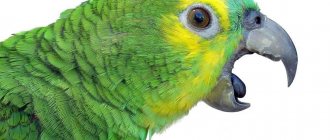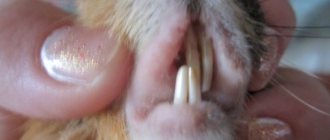- Reptiles
For their slowness and sluggishness, as well as an interested turn of the head and an inspiring look, cute animal turtles can be called royal. They are unpretentious and require a little free space to place an aquarium/terrarium.
At the same time, rest assured that you will spend more than one evening looking at the rich drawings with various shades of green. How do children love turtles?! Watching the behavior and grace of these little creatures is a pleasure. Naturally, in a pet store you examine the pet you are purchasing and fix your gaze on a healthier individual. It often happens that in a store with an animal, everything seems to be fine at first glance, but when you move a new friend to an unusual habitat, the question arises about the behavior of the reptile - why does the turtle squeak? The root cause may be the move itself and the stress of the animal, which is reflected in this reaction. This does not mean that you should rush back to the store with a live purchase. It also does not indicate illness or debilitating illness in your new pet.
The reasons why a turtle (most often the problem concerns the red-eared slider) makes a squeak can be the following:
- The most common reason for a turtle squeaking is sexual maturity. When a reptile reaches sexual maturity and is preparing to reproduce, it squeaks to attract the attention of individuals of the opposite sex. If you only have one turtle in your apartment, it is unlikely that this is the reason for the squeaking.
- By squeaking, a turtle may be trying to convey its displeasure. Carefully study the conditions in which your pet is kept - perhaps some external factor is simply causing him discomfort.
- If your turtle squeaks, inspect it carefully. A pet can express pain by squeaking. Often it is with a squeak that the reptile notifies of injury. Examine its skin and shell.
- The most unpleasant reason why a turtle may squeak is because of illness. Many diseases of the lungs and respiratory system in general have exactly this symptom. It is not recommended to prescribe treatment on your own without special knowledge - this can only cause harm.
In any case, if your pet squeaks for more than 7 days, a visit to the veterinarian is recommended. If your animal has lived with you for a large amount of time (several months or more) and you begin to notice some sound reaction to certain of your actions, such as being pulled out of the aquarium, the pet’s lack of desire to get out onto a dry island, some changes in the skin, then you should immediately contact qualified specialists.
Signs of illness in a turtle?
First of all, examine the appearance of your pets for possible symptoms of disease. Danger signs may include swollen eyes, mucous discharge from the nose, drool in the mouth, yellow plaque or ulcers. In this case, you may be concerned that your turtle may have contracted pneumonia, and qualified intervention is required. However, in any case, first watch your pet. Perhaps the “squeak” occurs when the turtle eats juicy food. In addition, red-eared turtles make a similar sound during the breeding season.
In combination with other symptoms (refusal to go to land, to eat, hibernation), the squeak can be a stress reaction as a result of improper living conditions.
Rickets in a red-eared turtle
What does a turtle squeak tell you?
It’s worth noting right away that the squeak is quite good - this is when a sexually mature reptile hints at its condition to a representative of the opposite sex with such a sound: pay attention to me already!
If only one individual lives in the terrarium, then the reasons for the squeaking may be more serious.
Among them:
- stress when the environment changes;
- living conditions that for some reason the pet does not like;
- improper diet;
- a wound or injury received for some reason;
- and the most serious illness.
Pneumonia and other respiratory diseases
When talking about serious illnesses during which turtles squeak, one cannot fail to mention pneumonia. If your turtle has pneumonia, it must be urgently treated with medication. Ulcers, saliva coming from the mouth, mucous discharge, swollen eyes and yellow plaque can help identify pneumonia in a turtle. If any of these signs are present in your turtle, take it to the vet immediately.
A squeak when a turtle breathes only means that there is an obstacle in the larynx area that causes sound vibration. This may be pulmonary sputum, but most often it is saliva, food fragments or mucus from the stomach that accidentally enters the trachea. If these episodes recur, a drop of 24% aminophylline can be injected into the trachea during inhalation.
Progress of the procedure:
- Open your mouth, press on the throat from below so that the root of the tongue rises.
- There is the entrance to the laryngeal fissure.
- During inhalation, it opens (two petals diverge to the sides).
- At this moment, drop aminophylline there through a thick syringe needle, cutting off its sharp tip.
Nutritional Features
Feeding your pet is also very important. These predators love raw meat, bloodworms, and granulated food.
But it is important to include fish in your diet for the following reasons:
- calcium replenishment: fish should be given with bones, which are not dangerous for the pet;
- the need to eat lean fish, and fatty varieties can be given only occasionally.
It is important to have a varied menu so that the turtle receives all the vitamins and minerals it needs. For example, if some component is missing, then there is a risk of developing some kind of ailment
It is not so easy to cure it.
Young individuals need animal food, but as they age, plant food must be given. Up to 2 years old, you need to feed your pet once a day, and then three times a week. Food should be placed on the island so that the water remains clean for a long time.
It is better to find out from a doctor why the red-eared turtle squeaks. This will allow you to identify the disease in time and quickly eliminate it. And simple rules for keeping and feeding will help maintain a comfortable life for the animal.
Other turtle sounds
It is believed that turtles are the most silent animals in the world and cannot make sounds. The most common “screams” heard from male land turtles are when they mount a female or what they think is a female during mating. It is believed that each species has its own voice, by which this species can be recognized. Females usually do not make any sounds when mating.
Some turtles, once in captivity, make different sounds, but then, having gotten used to them, they go numb. But in addition to screams, turtles can occasionally make various sounds that can frighten the owner or mistress.
Sometimes when closing the mouth of aquatic turtles, the tips of the horny jaws “click” against each other can be heard. If a large turtle sharply draws its head into its shell, then the air forced out of the lungs may emit a “hissing” sound, and the turtle itself may hiss if it is very frightened (and again sharply draws its head in).
- Alexandrian parrot
- Why does a cat need a mustache?
- Rescue dogs
- Hypoallergenic cats
- Why does a cat need a tail?
- Chinchilla
Red-eared turtles may whistle when they stick their nose or muzzle out of the water. This often happens when they are unhappy with something, or just because. If there are no alarming symptoms, then such whistling is normal, and nothing can be done about it. For example, red-eared turtles make a sound similar to “croaking” for no particular reason.
But if your turtle regularly opens its mouth, stretches its neck and squeaks, start sounding the alarm and is lethargic and refuses to eat. This is likely a sign of pneumonia, which turtles do not live long with. So start looking for veterinarian herpetologists in your city.
Hibernation
Under natural conditions, when cold weather or unbearable heat sets in, free-living reptiles hibernate, during which metabolism slows down, sexual cycles in males and females are synchronized, and hormonal regulation is normalized. Thanks to this physiological feature, turtles can go without food for a long time in winter and summer.
Domestic red-eared turtles do not need to hibernate; they are kept in comfortable conditions all year round and receive sufficient food. But for some individuals in the fall, due to a decrease in daylight hours, lack of central heating, or as a result of instincts, life processes slow down, the animal stops eating dry or natural food, becomes lethargic, looks for a dill corner, and tries to hide. If a turtle is not active in October-November, hardly swims, often lies on land and has not eaten for 2 weeks, the animal is most likely hibernating.
What should you do if your red-eared turtle hibernates and stops eating?
A sleeping reptile must be placed in a small aquarium with a minimum amount of water; the bottom must be covered with soil at least 10 cm thick. An adult animal will hibernate for 4-5 months, the optimal hibernation temperature is +6-8C. First, turn off the lighting lamps and keep the animal for 3-5 days at room temperature. Then, over the course of 10 days, it is necessary to gradually lower the temperature to +6C; with a sharp decrease, the animal can die instantly. The reptile is brought out of hibernation by gradually increasing the temperature and bringing it to optimal values as the animal wakes up.
Scientists' opinion
According to researchers, adult turtles communicate with each other and with their hatchlings using at least six different types of sounds. The findings, published in the journal Herpetologica, suggest that turtles live more complex social lives than previously thought.
The study was carried out from 2009 to 2011 on the Trombetas River, located in the Brazilian state of Pará in the north of the country. Using microphones and hydrophones, scientists were able to record over 250 sounds made by river turtles. They then analyzed them into six types that correlated with specific turtle behaviors.
“The exact meaning of these sounds is unclear. However, we believe that turtles exchange information,” Dr. Camila Ferrara, who took part in the study, told the BBC. “We believe that sounds help animals coordinate their actions during egg-laying season,” Ferrara added. The sounds produced by the turtles varied slightly depending on what the animals were doing at the moment.
For example, a turtle made a specific sound when adults swam across a river. When the rest of the turtles gathered on the shore where the clutches were made, she made a different sound. According to Dr. Ferrara, female turtles use sounds to direct their newly hatched offspring into the water and back to the shore. Since many turtles live for decades, scientists suggest that during their lives, young turtles learn to communicate using sounds from more experienced relatives.
Improper care
The red-eared turtle is a cold-blooded animal; in order for it to be comfortable, the ambient temperature should be from 26 to 35 degrees.
A UV lamp is required to maintain the required temperature. You also need an incandescent lamp with a 40-watt bulb, which must be turned on for 12 hours a day.
When reptiles are cold, they not only refuse food, but also look lethargic, float on the surface and cannot dive. As soon as the ambient temperature is optimal, the animals’ appetite will normalize. If this does not happen, then it is not a case of hypothermia and the help of a veterinarian is required. It must be remembered that overheating is just as dangerous for reptiles as hypothermia.
conclusions
If your turtle has reached the age of 7-10 years and begins to squeak, then most likely its squeak is associated with reaching sexual maturity. If your turtle suddenly starts squeaking, inspect its body. Often such sounds can be accompanied by pain - make sure that there are no injuries on the turtle’s body. If there are no injuries and the age of sexual maturity has not been reached, but the turtle squeaks and refuses to eat or go onto land, make sure that this is not a reaction to improper keeping of the pet, since turtles are demanding of living conditions.
Content Rules
After purchase, the turtle must be placed in an aquarium with clean water that has been standing for a day. It is advisable to install a pump filter, as this will help the turtle grow faster. There may be aquarium fish with her, but only when the animal becomes a little larger.
A suitable bridge to land should be installed. It is advisable to choose a product with a rough surface, as it is more convenient to climb on. But glass or plastic products are not suitable, as they are slippery. The bridge should be placed less than 30 cm from the wall of the aquarium.
Warmth is important for a turtle, and room temperature is not always comfortable for it. Above the 10 cm island, you need to install a lighting fixture with a 40-watt incandescent light bulb. This temperature will be favorable for her.
Do red-eared turtles and land turtles hear? Where are the ears of turtles?
- home
- Keeping red-eared turtles
- Do red-eared animals and land animals hear...
a red-eared turtle feels in an unfamiliar environment is not so easy, so the owner of the animal must have an idea of the biology of his pet. For example, the question of whether turtles can hear confuses many.
Predatory pets
The little red-eared turtle loves to eat raw meat because it belongs to the category of predators.
It is worth remembering that the cute, now domestic, red-eared turtles were once part of the wild, in which they had to fight for survival. They defended themselves from lovers of turtle meat (both on land and in water), and competed for the best place in their flock. Therefore, careless play with this animal (especially at the time of eating, mating or pregnancy) can turn into a big nuisance.
The fact is that this predator can perceive such games as an attack on its peaceful existence and react very hostilely. This animal demonstrates its displeasure by strongly biting its ill-wisher.
Although these reptiles do not have teeth, the bite force of a turtle can be quite impressive. The animal’s powerful jaws bite into the “enemy” with an “iron grip” and often leave a bloody wound that takes a long and painful time to heal.
The red-eared slider is named for the colored stripes behind its eyes, but these animals do not have ears.
How to proceed?
If a newly acquired turtle makes a squeak, this is not a symptom of any illness. This means that the reptile’s nervous system responded so subtly to the move and new place of residence. There is no need to be scared, at least in the first couple of days. This will pass. Try to create the most comfortable conditions for the new tenant in the new home.
It happens that a turtle that has been living at home for a long time suddenly begins to squeak. If her behavior is otherwise not suspicious, carefully examine her surroundings. It is possible that something has become irritating to the tortilla, and this is how she expresses her dissatisfaction with some object or external factor.
By the way, dissatisfaction can also be expressed due to improper feeding. In the case of the red-eared slider, this may be an overabundance of succulent food. If this is so, then the animal may be at risk of some kind of disease, which in turn is manifested by the appearance of a voice.
Is everything ok with your diet? Then you should definitely carefully examine the external integument of the amphibian to see if there are any injuries, cracks in the skin or shell. Perhaps the turtle is simply squeaking in pain.
Or a herpetic infection that doesn’t give you peace, check your mouth. As already mentioned, the most serious and very unpleasant reason why the tortilla begins to squeak is a disease, most often of the respiratory system.
Some herpetologists also call the cause of turtle squeaking a herpes virus infection. You can carefully check with a cotton swab
No self-medication! If the reptile beeps for a week, a direct route to the veterinary hospital. Only a veterinarian-herpetologist will be able to establish an accurate diagnosis and determine how to deal with the problem.











